Canyons, red rocks, juniper in the breeze, and wide open skies– I didn’t know I would find all of these things and more in West Texas. Passing businesses like the “It’ll Do Motel” and “This n That (Mostly That),” we found an abundance of charm during the day and glittering stars at night. Comanche and Kiowa people have stewarded this land for centuries with reverence for its many species of plants and animals.

Palo Duro Canyon State Park at sunrise, seen from the Sorensen Cabin.
A couple of weeks ago, I headed to Texas for a stargazing road trip across three State Parks. I’d never been to this part of Texas before, and apart from what I’d seen online during my research, I wasn’t too sure what to expect! I crossed my fingers for clear nights as we boarded our flight from LA to Amarillo.
We arrived at Palo Duro State Park after grabbing enchiladas for dinner at El Manantial in Amarillo. We stayed at one of the cozy cabins along the rim of the canyon built by the Civilian Conservation Corps in the 1930’s. Ours was the Sorensen cabin, which had plenty of space outside to set up a tripod (just make sure to bring a tall one, or plan to put it on the picnic table to see over the chain link fence).
Even though it was partly cloudy, I set up a timelapse just in case. The canyon was peaceful and completely silent, except for an occasional owl call. The clouds cleared just as the galactic core of the Milky Way started to rise, giving me my first real view of the stars in this part of the country.
Dancing clouds outside our cabin
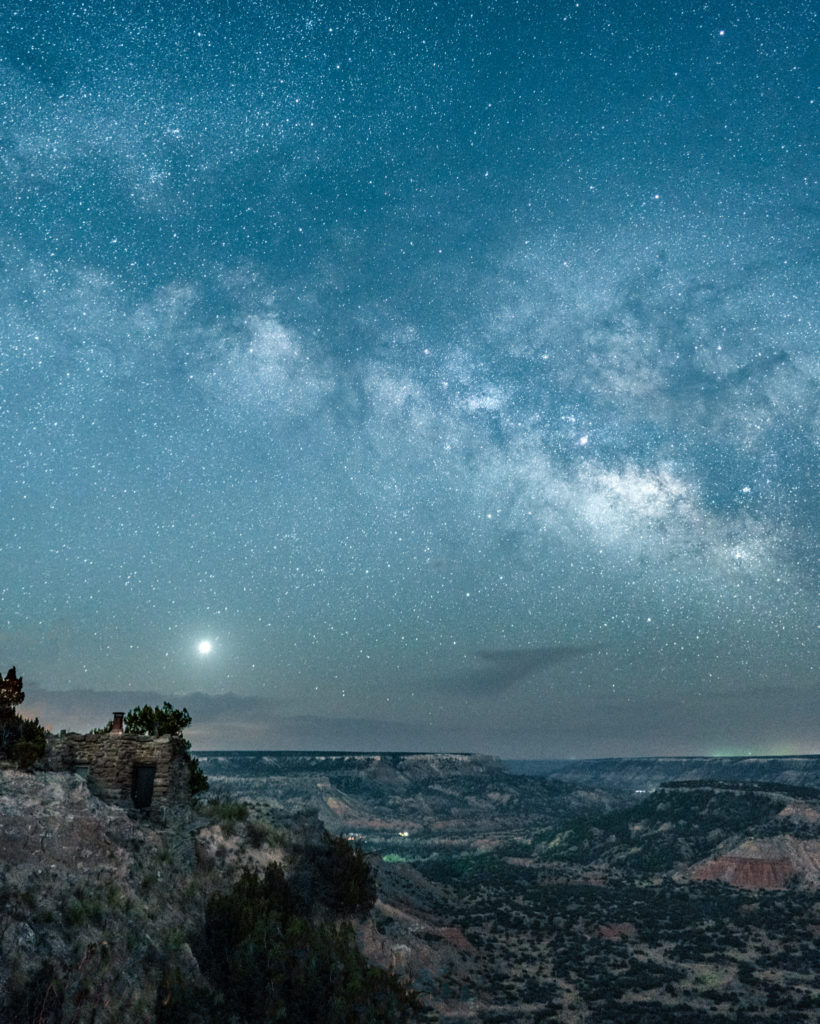
The galactic core over Palo Duro Canyon
After watching the sunrise paint the rocks orange and red, we took a nap for a few hours before heading onward to our next destination. We stopped for lunch at Crush Wine Bar in Amarillo, which had great food and service with vegetarian options (not always easy to find)!
My next destination for stargazing and astrophotography was 2.5 hours away in Copper Breaks State Park. We pulled up in the afternoon to scout the location, and checked in with the Visitor’s Center where a friendly ranger answered all of my questions, giving us recommendations on the best spots to view the stars from. Copper Breaks is registered as an International Dark Sky Park, and they host astronomy and stargazing programs throughout the year. During our daytime visit, I positioned a few photos with my tracking app (I use PhotoPills), and planned to come back around 4am when the galactic core was visible.
The closest town to Copper Breaks is Quanah. We stayed in the historic part of the town, which felt a bit eerie as we pulled in. We were shocked to walk into the Dixie Star Boarding House, which was fully equipped for a comfortable stay, and completely updated– a sharp contrast to its surroundings.
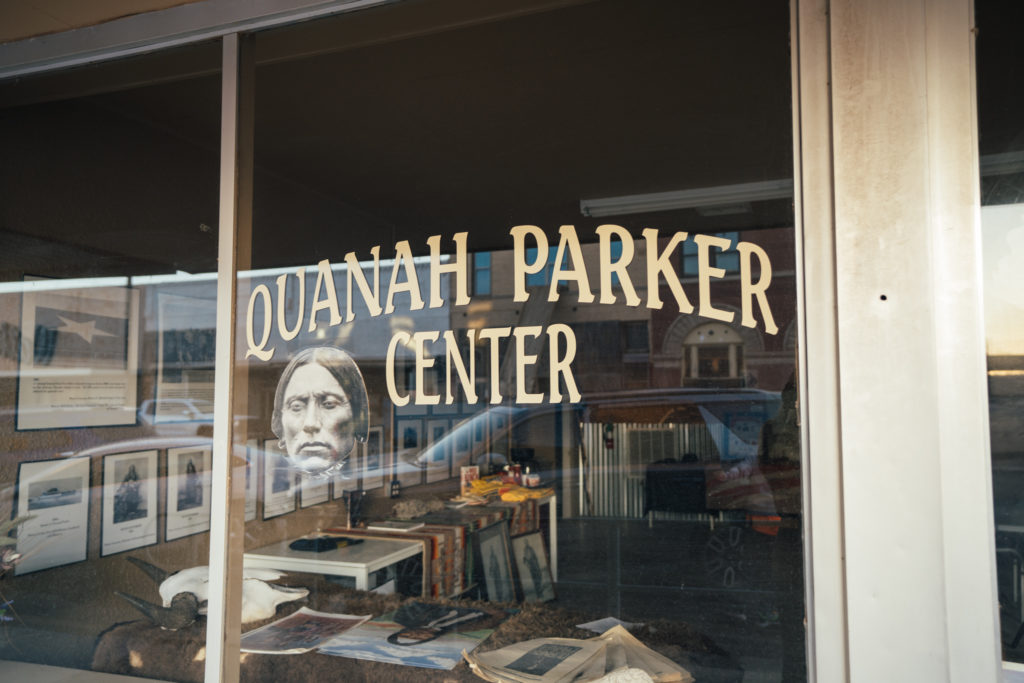
The Quanah Parker Center – not open during our visit unfortunately!
We arrived back at the park at 4:15am, and I began setting up to photograph the core above some of the campsites. We were treated to the calls and howls of coyotes from somewhere across the park, a special soundtrack for such a gorgeous early morning. Eventually we headed down to the lake, which I was hoping would be still so that I could photograph reflections. To my delight, it was! I set up my camera to capture the Milky Way and its reflection in the water, decorated with reeds. The images were exactly what I had hoped to create. I’m grateful for the grounding and connection I feel in moments like this.
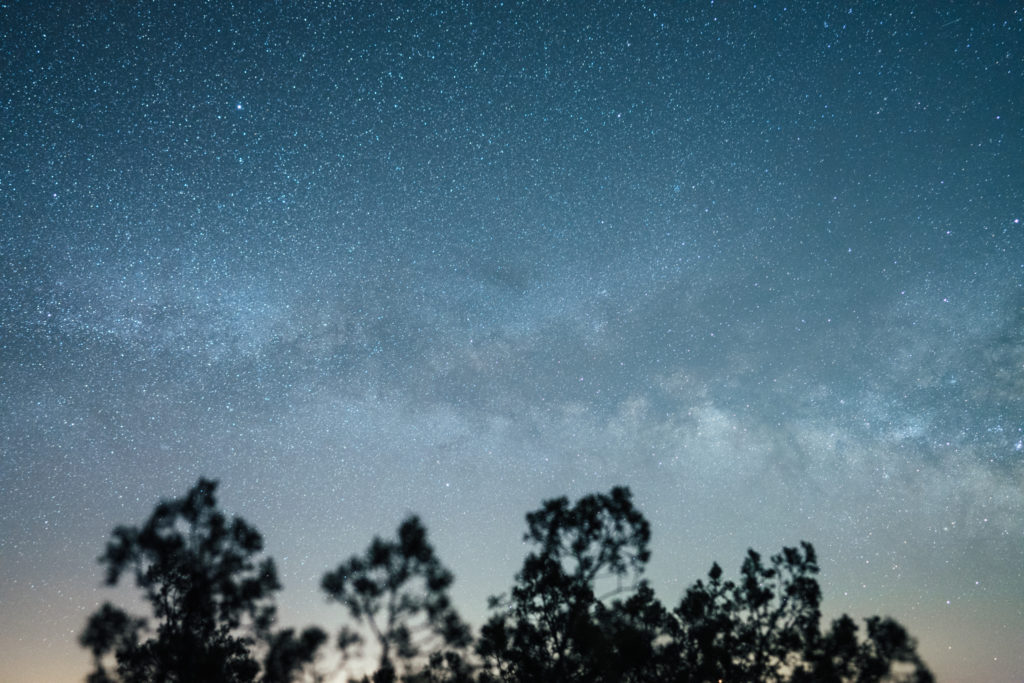
Copper Breaks State Park
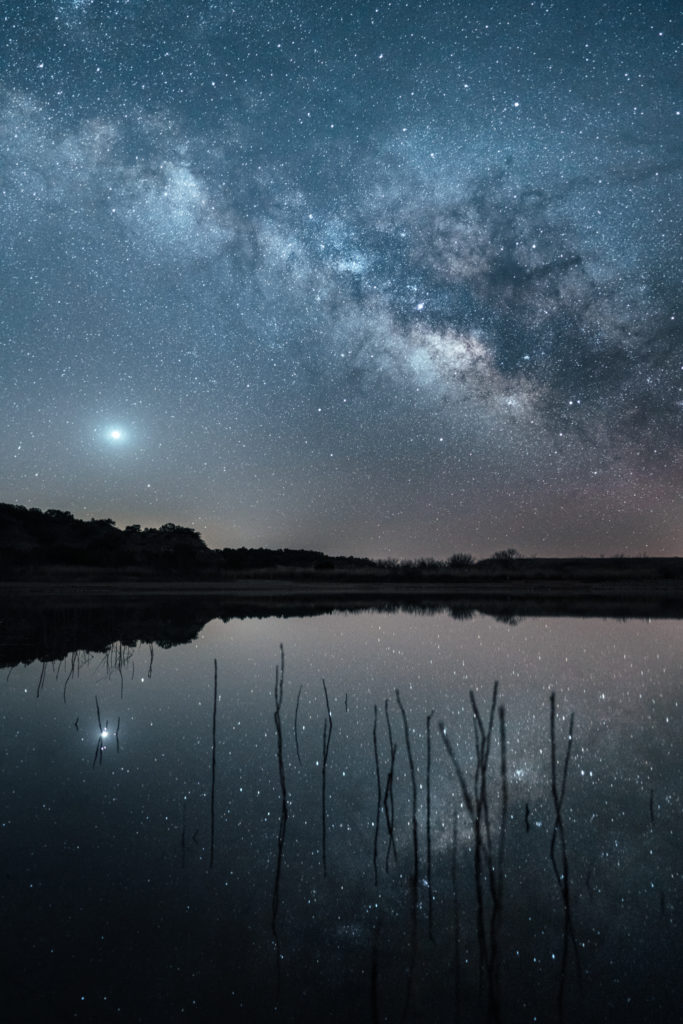
My favorite image of the stars I captured at Copper Breaks State Park, photographed at the lake.
Through our time at Copper Breaks, we learned about Quanah Parker (who the nearby town of Quanah is named after), a Comanche chief known for peacekeeping and advocating for Native American rights. The Comanche and Kiowa people took care of this land for centuries, and still do.
Feeling satisfied with the images I created, we drove back to the boarding house to take a nap (crucial for night shoots). Mid-morning, we started the drive to Quitaque, a TINY (really tiny) Texas town just outside Caprock Canyons State Park. We stopped into the shops in town (all next to each other on the same street) and had some lovely chats with locals, who were so curious what we were doing there all the way from LA.
Caprock Canyons State Park was my favorite place we’d been to so far. It was reminiscent of Sedona in terms of the colors and textures of the land, and felt remote and well cared for. We saw bison (the official herd that roams free), prairie dogs, a coyote, deer, and lots of birds. In the afternoon, we hiked a bit of the trail from the south prong parking lot at sunset, the heat of the day starting to cool off. I felt totally engulfed in the landscape. This place is really special.
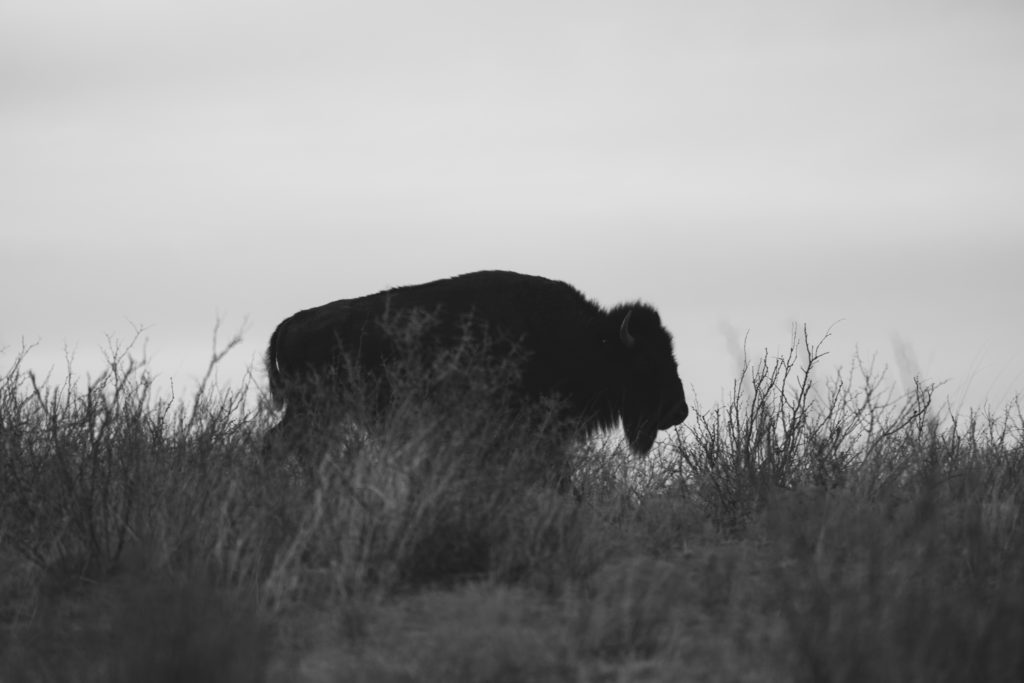
Bison at Caprock Canyons State Park
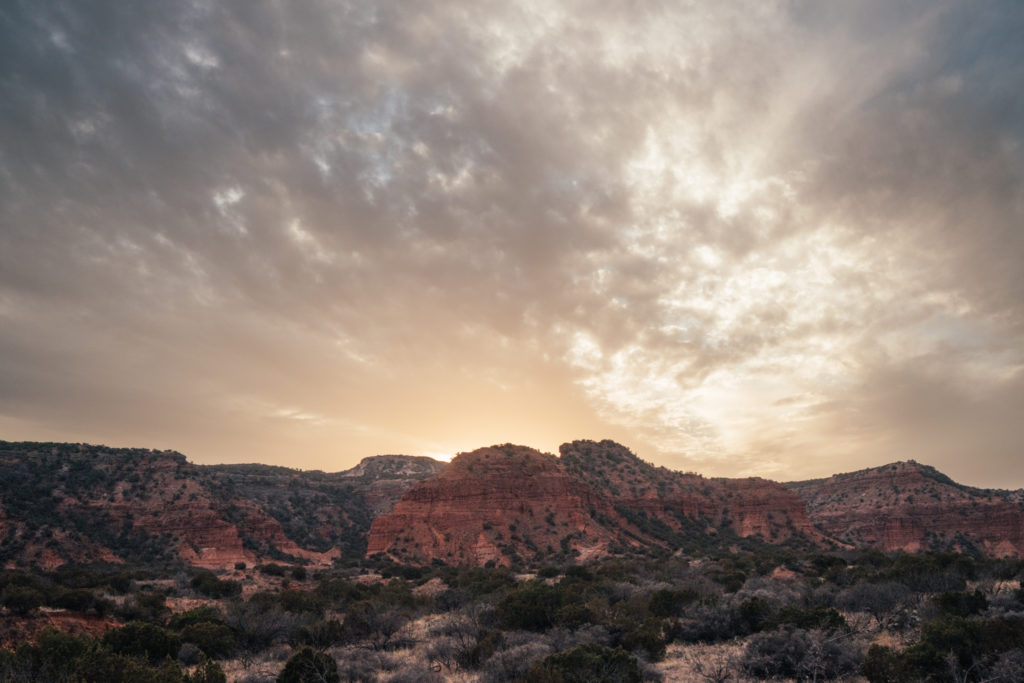
A glowy sunset at Caprock Canyons State Park.
It was overcast throughout the night, so I didn’t have the chance to do any astrophotography here. I did hear that the park is working on their dark sky certification though, and they lead ranger programs for stargazing. Astrophotography here would be great, given the many rock formations that could be used as foreground elements.
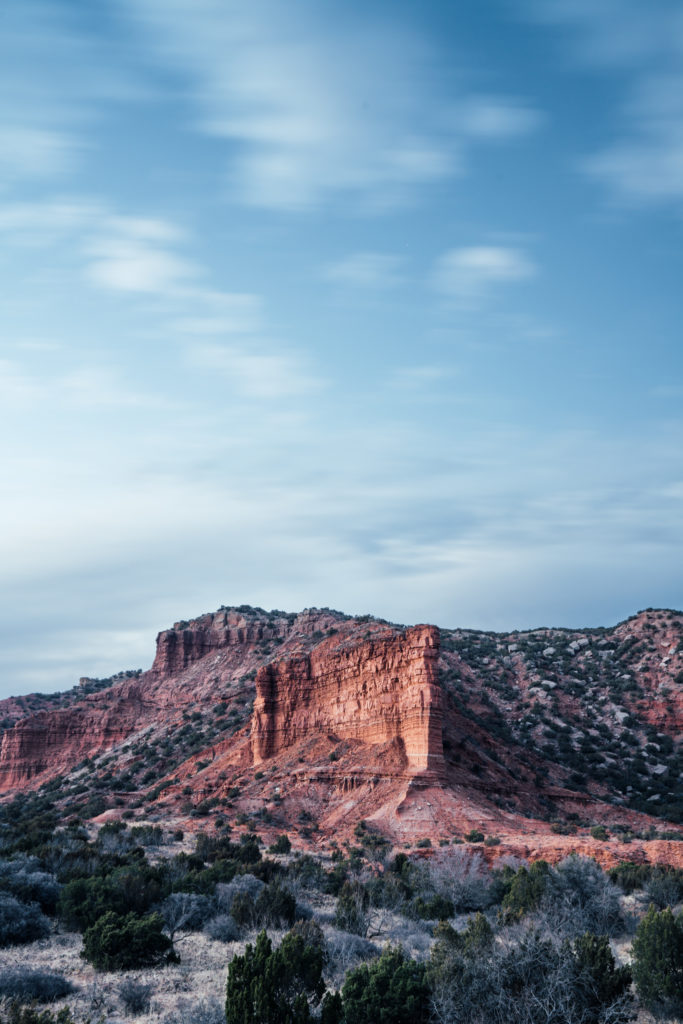
Caprock Canyons State Park at blue hour
In the morning, we drove back to our favorite shop, The Coffee Mill and Mercantile, for bagels and coffee. A local gentleman struck up a conversation with us, offering lots of recommendations for us for viewpoints and interesting places to photograph nearby. We had a few extra hours to enjoy before heading to our next location, so we drove down some of the roads he suggested to admire the views.
Next it was time to head back to Palo Duro Canyon for our final night. We had planned to get there early, but about 20 minutes from the canyon we passed a large yellow sign advertising a western hat store. I swung a swift 180 to go check it out– getting a hat seems like something you should do in West Texas!
West Texas Western Store in Canyon made all of our hat dreams come true, with the owner custom creasing and steaming our new straw hats (after we tried on the entire store with two very patient and hospitable sales girls). I had mine creased in a “west Texas punch”, a style specific to this area. We’ll be wearing our cowboy hats with pride back in California.
We grabbed a late lunch at Pondaseta Brewery and had a few tasters of their beers (I had the oreo stout and the kiwi IPA)– all really good! Then it was back to Palo Duro Canyon to scout the next photo spot, which we luckily found right away. Outside the visitor’s center, there is a beautiful view of the canyon, and the galactic core was going to be right above it. Sure enough, at 4:30am the stars were shining bright above the canyon and I was able to create this photo.
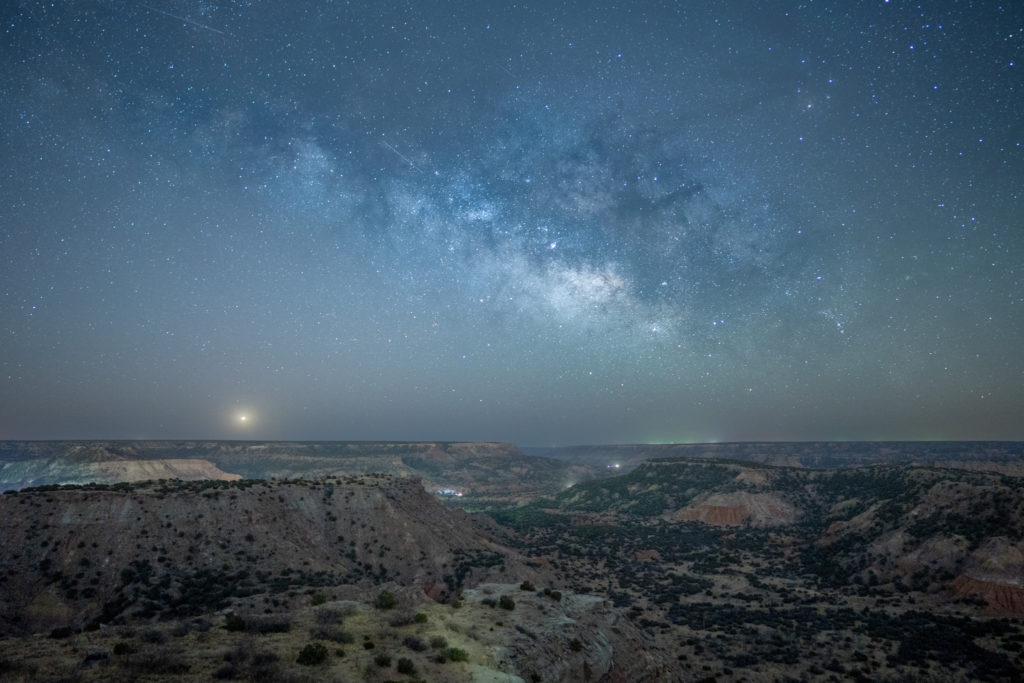
The core of the Milky Way rising over Palo Duro Canyon, viewed from the visitor’s center viewpoint.
After our morning nap and a great breakfast sandwich at the Palo Duro Trading Post, we headed to the airport for our flight back to LA. I have so much gratitude for the people we met along the way for showing us warm hospitality. Regarding the rugged beauty of these places, I’m reminded of what the man told me in Quitaque – “nobody knows this is here!”. I admit that I didn’t, but I’m thankful for the opportunity to see and experience these beautiful places in person.
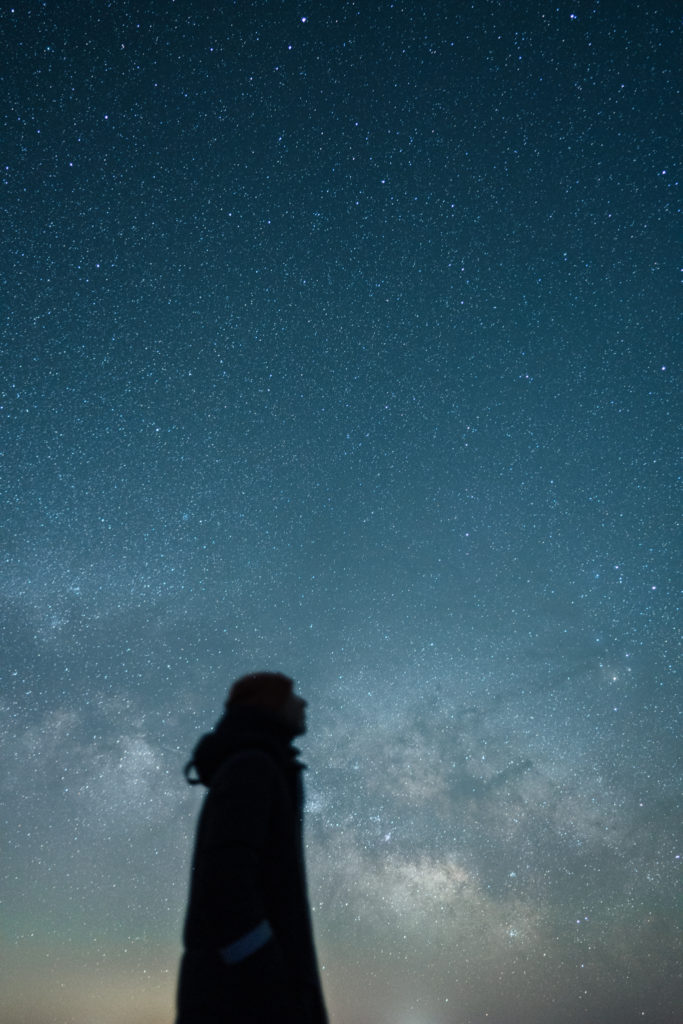
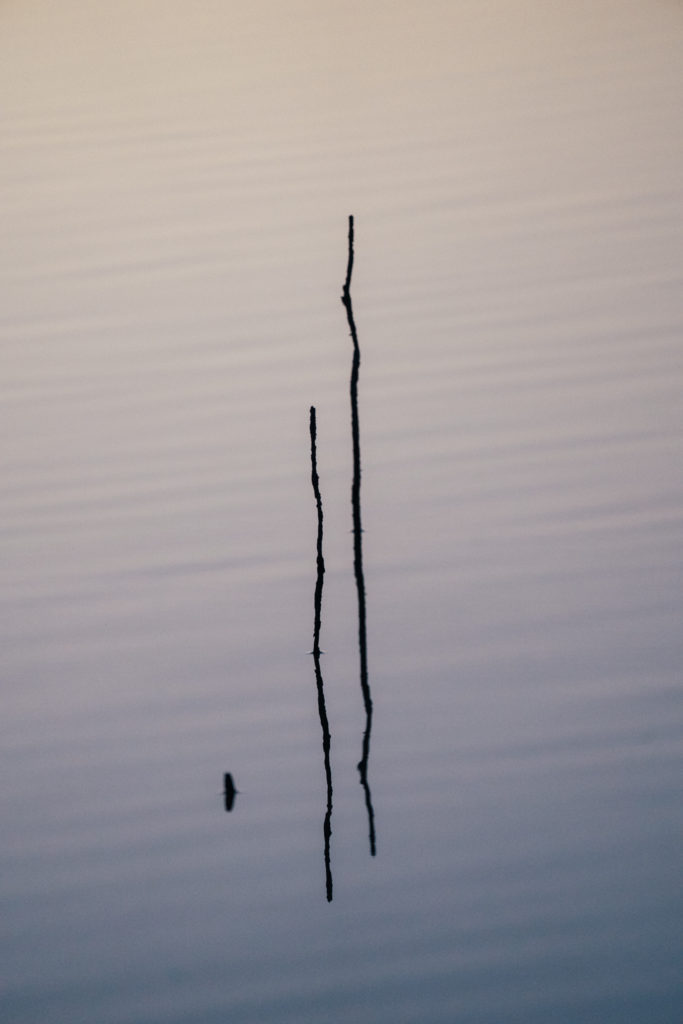
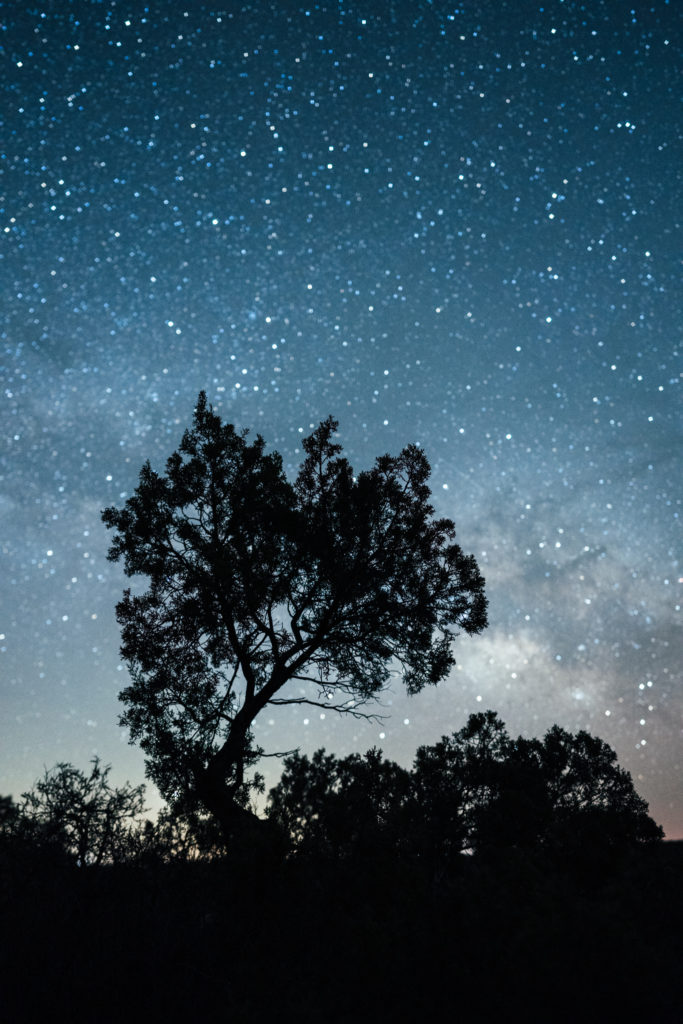
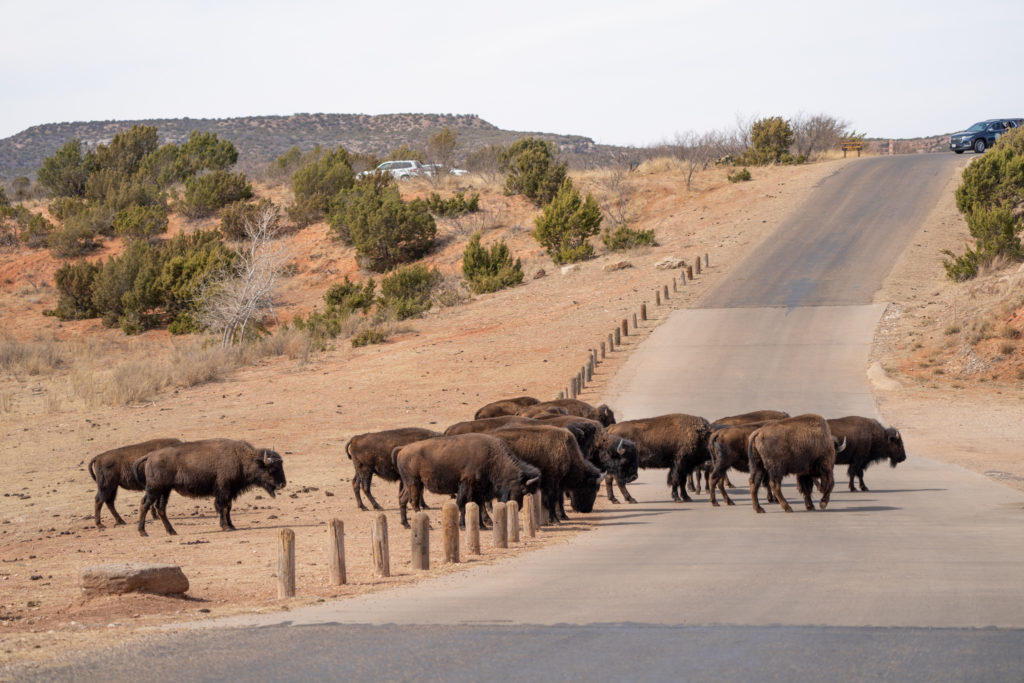
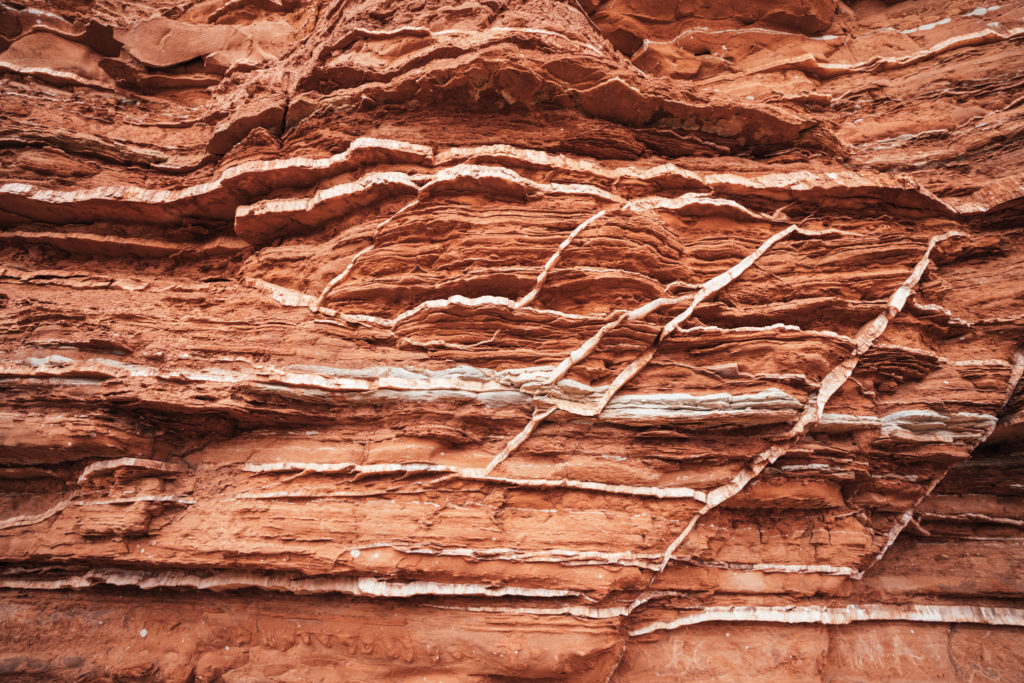

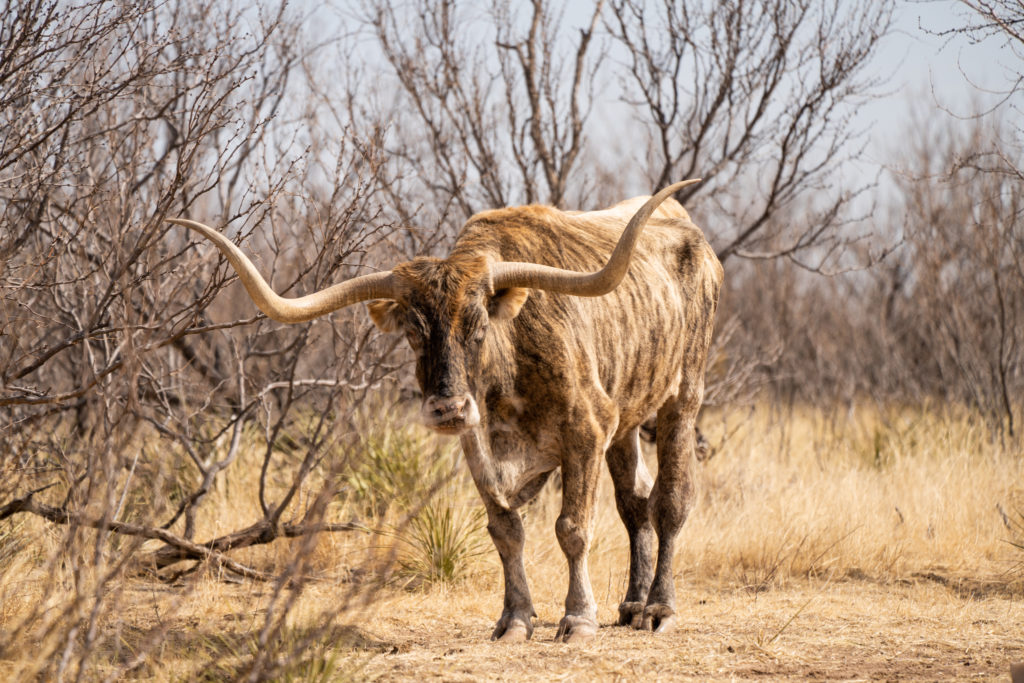

This blog post is sponsored by Travel Texas. As always, views are my own.
The post Astrophotography and Stargazing in West Texas appeared first on ERIN OUTDOORS.

Palo Duro Canyon State Park at sunrise, seen from the Sorensen Cabin.
A couple of weeks ago, I headed to Texas for a stargazing road trip across three State Parks. I’d never been to this part of Texas before, and apart from what I’d seen online during my research, I wasn’t too sure what to expect! I crossed my fingers for clear nights as we boarded our flight from LA to Amarillo.
We arrived at Palo Duro State Park after grabbing enchiladas for dinner at El Manantial in Amarillo. We stayed at one of the cozy cabins along the rim of the canyon built by the Civilian Conservation Corps in the 1930’s. Ours was the Sorensen cabin, which had plenty of space outside to set up a tripod (just make sure to bring a tall one, or plan to put it on the picnic table to see over the chain link fence).
Even though it was partly cloudy, I set up a timelapse just in case. The canyon was peaceful and completely silent, except for an occasional owl call. The clouds cleared just as the galactic core of the Milky Way started to rise, giving me my first real view of the stars in this part of the country.
Dancing clouds outside our cabin

The galactic core over Palo Duro Canyon
After watching the sunrise paint the rocks orange and red, we took a nap for a few hours before heading onward to our next destination. We stopped for lunch at Crush Wine Bar in Amarillo, which had great food and service with vegetarian options (not always easy to find)!
My next destination for stargazing and astrophotography was 2.5 hours away in Copper Breaks State Park. We pulled up in the afternoon to scout the location, and checked in with the Visitor’s Center where a friendly ranger answered all of my questions, giving us recommendations on the best spots to view the stars from. Copper Breaks is registered as an International Dark Sky Park, and they host astronomy and stargazing programs throughout the year. During our daytime visit, I positioned a few photos with my tracking app (I use PhotoPills), and planned to come back around 4am when the galactic core was visible.
The closest town to Copper Breaks is Quanah. We stayed in the historic part of the town, which felt a bit eerie as we pulled in. We were shocked to walk into the Dixie Star Boarding House, which was fully equipped for a comfortable stay, and completely updated– a sharp contrast to its surroundings.

The Quanah Parker Center – not open during our visit unfortunately!
We arrived back at the park at 4:15am, and I began setting up to photograph the core above some of the campsites. We were treated to the calls and howls of coyotes from somewhere across the park, a special soundtrack for such a gorgeous early morning. Eventually we headed down to the lake, which I was hoping would be still so that I could photograph reflections. To my delight, it was! I set up my camera to capture the Milky Way and its reflection in the water, decorated with reeds. The images were exactly what I had hoped to create. I’m grateful for the grounding and connection I feel in moments like this.

Copper Breaks State Park

My favorite image of the stars I captured at Copper Breaks State Park, photographed at the lake.
Through our time at Copper Breaks, we learned about Quanah Parker (who the nearby town of Quanah is named after), a Comanche chief known for peacekeeping and advocating for Native American rights. The Comanche and Kiowa people took care of this land for centuries, and still do.
Feeling satisfied with the images I created, we drove back to the boarding house to take a nap (crucial for night shoots). Mid-morning, we started the drive to Quitaque, a TINY (really tiny) Texas town just outside Caprock Canyons State Park. We stopped into the shops in town (all next to each other on the same street) and had some lovely chats with locals, who were so curious what we were doing there all the way from LA.
Caprock Canyons State Park was my favorite place we’d been to so far. It was reminiscent of Sedona in terms of the colors and textures of the land, and felt remote and well cared for. We saw bison (the official herd that roams free), prairie dogs, a coyote, deer, and lots of birds. In the afternoon, we hiked a bit of the trail from the south prong parking lot at sunset, the heat of the day starting to cool off. I felt totally engulfed in the landscape. This place is really special.

Bison at Caprock Canyons State Park

A glowy sunset at Caprock Canyons State Park.
It was overcast throughout the night, so I didn’t have the chance to do any astrophotography here. I did hear that the park is working on their dark sky certification though, and they lead ranger programs for stargazing. Astrophotography here would be great, given the many rock formations that could be used as foreground elements.

Caprock Canyons State Park at blue hour
In the morning, we drove back to our favorite shop, The Coffee Mill and Mercantile, for bagels and coffee. A local gentleman struck up a conversation with us, offering lots of recommendations for us for viewpoints and interesting places to photograph nearby. We had a few extra hours to enjoy before heading to our next location, so we drove down some of the roads he suggested to admire the views.
Next it was time to head back to Palo Duro Canyon for our final night. We had planned to get there early, but about 20 minutes from the canyon we passed a large yellow sign advertising a western hat store. I swung a swift 180 to go check it out– getting a hat seems like something you should do in West Texas!
West Texas Western Store in Canyon made all of our hat dreams come true, with the owner custom creasing and steaming our new straw hats (after we tried on the entire store with two very patient and hospitable sales girls). I had mine creased in a “west Texas punch”, a style specific to this area. We’ll be wearing our cowboy hats with pride back in California.
We grabbed a late lunch at Pondaseta Brewery and had a few tasters of their beers (I had the oreo stout and the kiwi IPA)– all really good! Then it was back to Palo Duro Canyon to scout the next photo spot, which we luckily found right away. Outside the visitor’s center, there is a beautiful view of the canyon, and the galactic core was going to be right above it. Sure enough, at 4:30am the stars were shining bright above the canyon and I was able to create this photo.

The core of the Milky Way rising over Palo Duro Canyon, viewed from the visitor’s center viewpoint.
After our morning nap and a great breakfast sandwich at the Palo Duro Trading Post, we headed to the airport for our flight back to LA. I have so much gratitude for the people we met along the way for showing us warm hospitality. Regarding the rugged beauty of these places, I’m reminded of what the man told me in Quitaque – “nobody knows this is here!”. I admit that I didn’t, but I’m thankful for the opportunity to see and experience these beautiful places in person.








This blog post is sponsored by Travel Texas. As always, views are my own.
The post Astrophotography and Stargazing in West Texas appeared first on ERIN OUTDOORS.
